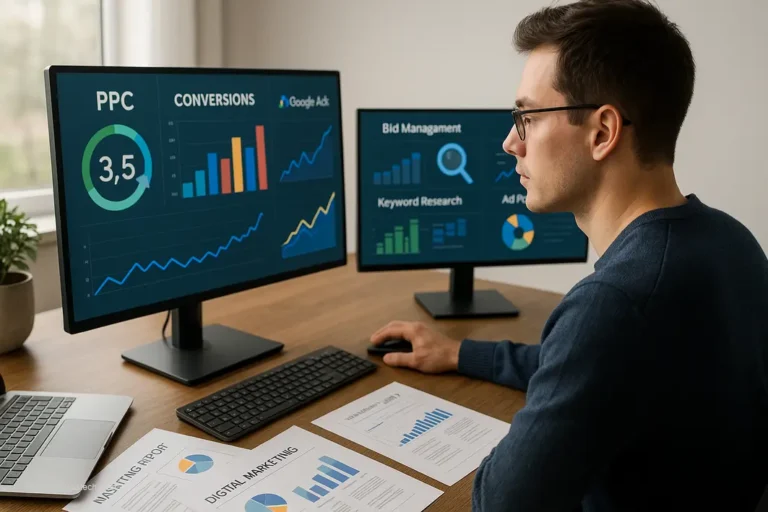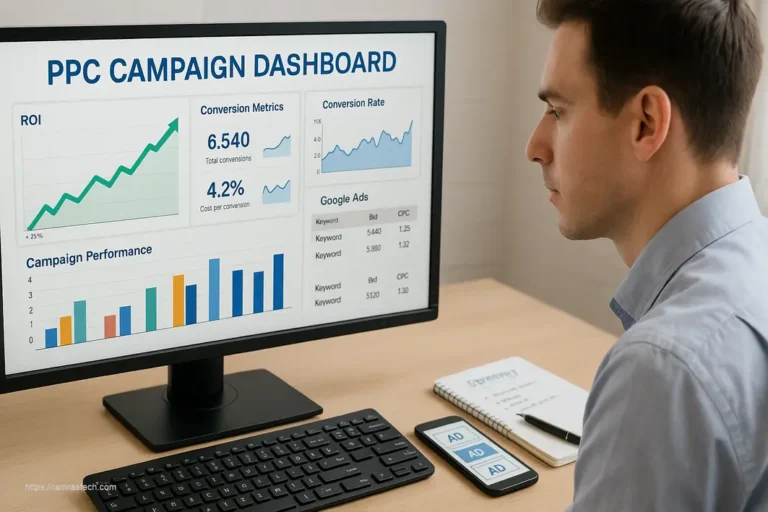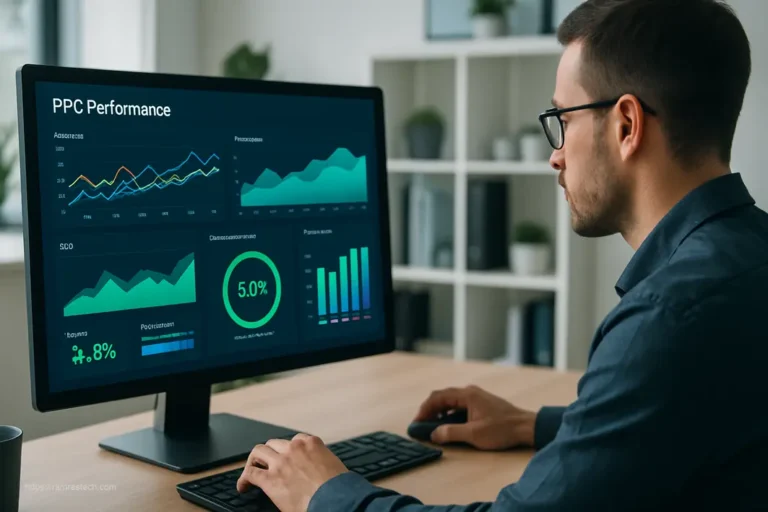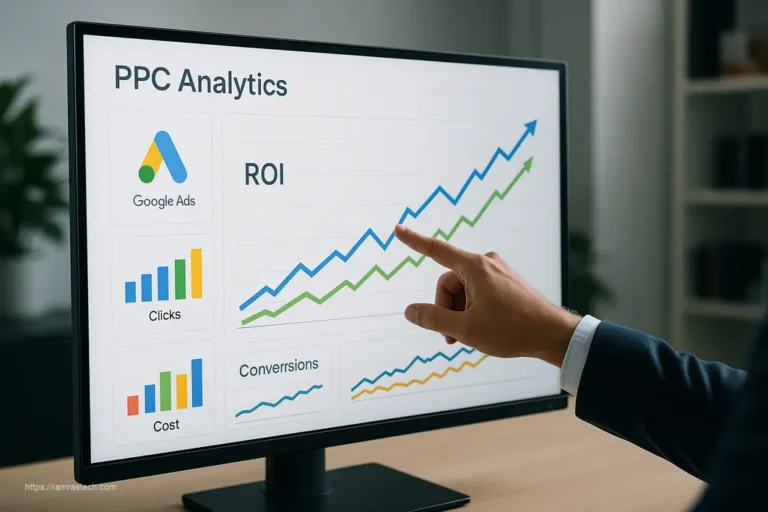Top 7 PPC Strategies to Skyrocket Your ROI in 2025
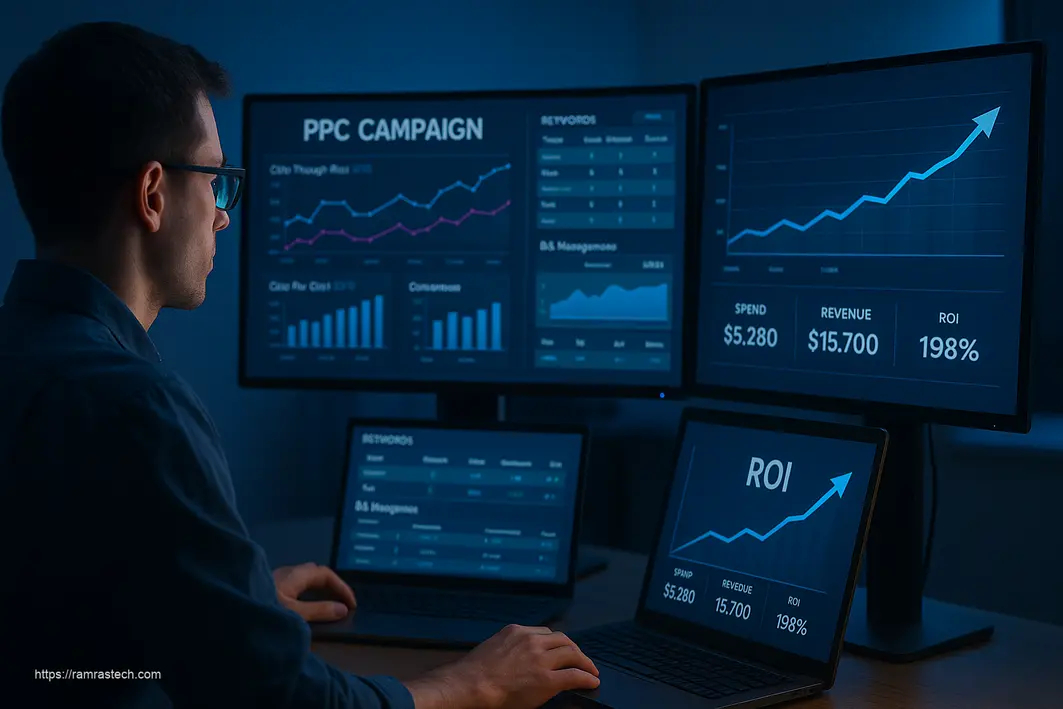
Are you throwing money into the digital abyss with your PPC campaigns? You’re not alone. Many marketers struggle to turn their pay-per-click investments into measurable returns. But here’s the thing – PPC advertising remains one of the most powerful tools in your digital marketing arsenal when executed correctly.
In today’s hyper-competitive online landscape, understanding how to leverage PPC strategies effectively isn’t just helpful—it’s essential for survival. Let’s dive into everything you need to know to transform your PPC campaigns from money-draining disappointments into revenue-generating machines.
What Is Pay-Per-Click (PPC) Advertising and Why Does It Matter?
Pay-Per-Click (PPC) advertising is a digital marketing model where advertisers pay a fee each time someone clicks on their ad. Unlike traditional advertising where you pay for exposure regardless of interaction, PPC ensures you only pay when a user shows explicit interest by clicking.
The significance of PPC in today’s digital marketing landscape cannot be overstated. As organic reach continues to decline across platforms and competition intensifies, PPC offers a reliable method to:
- Generate immediate visibility for your brand
- Drive highly targeted traffic to your website
- Capture high-intent visitors actively searching for your products or services
- Achieve measurable results with precise attribution
In 2025, as digital advertising platforms become increasingly sophisticated and competitive, implementing effective PPC strategies is no longer optional for businesses seeking growth.
Understanding PPC Fundamentals Before Diving Into Strategy
How Pay-Per-Click Actually Works
Before we explore advanced PPC strategies, let’s ensure we’re clear on the fundamentals. The PPC model operates on an auction-based system where:
- Advertisers bid on keywords relevant to their target audience
- When users search those keywords, the platform conducts an instantaneous auction
- Winners earn ad placement, with positioning determined by bid amount, ad quality, and relevance
- Advertisers pay only when someone clicks their ad
This system creates a performance-based advertising environment where relevance and quality are rewarded—not just spending power.
Major PPC Platforms You Should Consider
While Google Ads dominates the PPC landscape, a comprehensive PPC strategy in 2025 should consider multiple platforms:
- Google Ads: The largest search advertising platform, offering search, display, shopping, and video ad formats
- Microsoft Advertising: Reaching users across Bing, Yahoo, and the Microsoft Search Network
- Facebook & Instagram Ads: Powerful for demographic and interest-based targeting
- Amazon Advertising: Essential for e-commerce brands selling on or competing with Amazon
- LinkedIn Ads: Unmatched for B2B targeting and professional audience engagement
Each platform offers unique advantages, audience characteristics, and targeting capabilities that can complement your overall digital marketing strategy.
7 Powerful PPC Strategies That Will Transform Your Results in 2025
1. Leverage AI-Driven Campaign Automation
The days of manually adjusting every bid and budget are fading fast. In 2025, AI-powered automation has become an indispensable component of successful PPC strategies.
Modern PPC platforms now offer sophisticated machine learning algorithms that can:
- Optimize bidding in real-time based on conversion likelihood
- Allocate budget dynamically to high-performing campaigns and ad groups
- Identify patterns and insights invisible to human analysis
- Generate performance forecasts with increasing accuracy
For example, Google’s Smart Bidding strategies like Target ROAS (Return on Ad Spend) and Target CPA (Cost Per Acquisition) leverage machine learning to analyze thousands of signals in real-time, making bid adjustments that human managers simply couldn’t match in scale or speed.
Implementation Tip: Don’t surrender complete control immediately. Start by implementing automation in specific campaigns while maintaining manual control over others. This allows you to compare performance and gradually transition as you build confidence in the AI-driven approach.
2. Implement Advanced Audience Segmentation
Generic, one-size-fits-all campaigns are increasingly ineffective in today’s personalized digital environment. One of the most powerful PPC strategies in 2025 is creating highly segmented campaigns that target specific audience subsets with tailored messaging.
Consider segmenting your audiences by:
- Purchase intent (research phase vs. ready-to-buy)
- Previous engagement with your brand
- Demographic and psychographic characteristics
- Customer lifetime value potential
For instance, a home furnishing retailer might create separate campaigns for first-time homebuyers, professional designers, and seasonal redecorators—each with unique messaging, offers, and landing pages that address their specific needs and motivations.
Implementation Tip: Utilize platform-specific audience tools like Google’s Customer Match, Facebook’s Lookalike Audiences, and LinkedIn’s Matched Audiences to create highly targeted segments based on your existing customer data.
3. Prioritize First-Party Data in Your Targeting Strategy
As third-party cookies continue to phase out and privacy regulations tighten, first-party data has become the cornerstone of effective PPC strategies. First-party data—information collected directly from your audience with their consent—offers unmatched targeting precision and compliance security.
Smart advertisers are:
- Building robust email subscription programs
- Implementing proper data collection across their websites and apps
- Creating value exchanges that encourage users to share information willingly
- Developing comprehensive CRM systems that centralize customer data
This owned data can then power highly effective PPC campaigns through customer match features, lookalike modeling, and remarketing initiatives that respect privacy while maximizing relevance.
Implementation Tip: Develop a cohesive first-party data strategy that spans your entire marketing ecosystem, not just your PPC efforts. This might include lead magnets, loyalty programs, and interactive content that provides value while collecting permissioned data.
4. Embrace Responsive and Dynamic Ad Formats
Static, one-dimensional ads are rapidly losing effectiveness as user expectations evolve. Modern PPC strategies now emphasize responsive and dynamic ad formats that automatically adjust to maximize performance across devices, placements, and audience segments.
These advanced formats include:
- Responsive Search Ads (RSAs): Allowing multiple headline and description combinations that automatically optimize
- Dynamic Search Ads: Generating headlines based on your website content and user queries
- Dynamic Remarketing: Showcasing products users previously viewed with personalized messaging
- Feed-based ads: Automatically updating ad content based on your product or service inventory
For example, an e-commerce retailer using responsive search ads might provide 15 different headlines and 4 descriptions, allowing the platform to test thousands of combinations and identify which elements resonate best with different segments of their audience.
Implementation Tip: When creating responsive ads, ensure your various headlines and descriptions work in any combination. Maintain consistent messaging while offering enough variation for meaningful optimization.
5. Implement Comprehensive Conversion Rate Optimization
Driving traffic through PPC is only half the battle. The most successful PPC strategies in 2025 integrate comprehensive Conversion Rate Optimization (CRO) to ensure that traffic converts once it reaches your digital properties.
A holistic approach to CRO includes:
- Landing page design and testing focused on conversion paths
- Clear, compelling calls-to-action aligned with ad messaging
- Page load speed optimization (especially on mobile devices)
- Trust signals and social proof strategically placed in the conversion journey
The integration of CRO with PPC creates a virtuous cycle: as conversion rates improve, cost per acquisition decreases, allowing for higher bids, better ad positions, and ultimately more conversions at the same budget level.
Implementation Tip: Implement A/B testing on your highest-traffic landing pages, focusing on one element at a time (headline, form length, button color, etc.) to isolate what drives conversion improvements. Use this guide to conversion optimization to get started.
6. Diversify Your PPC Platform Mix
Relying exclusively on Google Ads is increasingly risky in 2025’s digital ecosystem. The most robust PPC strategies now include a thoughtfully diversified platform mix that maximizes reach while mitigating the risk of algorithm changes or performance fluctuations on any single platform.
Smart platform diversification considers:
- Where your specific audience spends their digital time
- Different platforms for different stages of the buyer’s journey
- The unique targeting capabilities each platform offers
- Cost efficiencies and competition levels across platforms
For instance, a B2B software company might use LinkedIn for initial awareness targeting decision-makers, Google for capturing active solution-seekers, and remarketing on Facebook to stay top-of-mind during lengthy consideration processes.
Implementation Tip: Start with a primary platform where your audience is most active, then gradually expand to complementary platforms. Maintain consistent tracking across all platforms to accurately compare performance and ROI.
7. Integrate Video and Visual Ad Formats
As consumer attention increasingly shifts toward visual and video content, incorporating these formats has become essential to effective PPC strategies. Video ads typically drive higher engagement rates and can communicate complex value propositions more effectively than text alone.
Consider implementing:
- YouTube advertising for awareness and consideration phases
- In-feed video ads on social platforms
- Video extensions in search campaigns where available
- Demonstration videos on landing pages to boost conversion
A SaaS company might use short explainer videos in their Google display campaigns, testimonial videos on Facebook, and product demonstration videos on their landing pages to create a cohesive visual story throughout the customer journey.
Implementation Tip: You don’t need Hollywood production values. Authentic, educational video content often outperforms overly polished commercial content. Focus on answering customer questions and demonstrating value clearly. Consider these digital marketing strategies to complement your video efforts.
Advanced PPC Campaign Management Techniques
Setting Clear, Measurable Objectives
Every successful PPC campaign begins with crystal-clear objectives. In 2025’s data-rich environment, vague goals like “increasing brand awareness” aren’t sufficient. Effective PPC strategies require specific, measurable targets tied to business outcomes, such as:
- Generating X qualified leads at Y cost per lead
- Achieving a specific ROAS (Return on Ad Spend) target
- Reducing customer acquisition cost by Z% quarter-over-quarter
- Increasing market share in specific geographic regions
These precise objectives then inform every aspect of your campaign structure, from keyword selection to bid strategy to ad copy development.
Structuring Campaigns for Maximum Control and Insight
The architecture of your PPC account significantly impacts your ability to optimize performance. A thoughtfully structured account allows for precise budget allocation, targeted messaging, and granular performance analysis.
Consider organizing your campaigns by:
- Customer segments or personas
- Product categories or service lines
- Geographic regions
- Funnel stages (awareness, consideration, decision)
Within each campaign, create tightly themed ad groups with closely related keywords and consistent messaging. This structure provides the control needed to implement sophisticated PPC strategies while maintaining clarity for analysis and optimization.
Performance Monitoring and Optimization Cadence
Successful PPC management requires a disciplined approach to monitoring and optimization. Establish a regular cadence for reviewing performance and making adjustments:
- Daily checks: Monitor for major issues or sudden performance changes
- Weekly reviews: Analyze key metrics and make tactical adjustments
- Monthly deep dives: Evaluate broader trends and implement strategic changes
- Quarterly strategy sessions: Reassess overall approach and alignment with business goals
This structured approach ensures you’re responding appropriately to both immediate opportunities and longer-term trends.
Maximizing ROI: The Ultimate Goal of PPC Strategies
Calculating and Measuring True PPC ROI
Return on Investment remains the north star metric for evaluating PPC performance. However, many advertisers calculate ROI incorrectly or incompletely, leading to misguided optimization decisions.
A comprehensive ROI calculation should consider:
- Revenue directly attributed to PPC campaigns
- Lifetime value of customers acquired through PPC
- Assisted conversions where PPC influenced but didn’t finalize the conversion
- Operational costs beyond just ad spend (management time, tools, etc.)
For example, a campaign might appear to have a negative ROI based on immediate transactions, but when factoring in the lifetime value of new customers acquired, it could actually represent one of your most profitable marketing channels.
Techniques to Boost PPC Return on Investment
Implementing these advanced techniques can significantly improve the ROI of your PPC strategies:
-
Quality Score Optimization: Improving your Quality Score through more relevant ads and landing pages can substantially lower your cost per click while maintaining or improving ad position.
-
Negative Keyword Refinement: Regularly auditing search terms and adding irrelevant terms as negative keywords prevents wasted spend on non-converting traffic.
-
Dayparting and Scheduling: Analyzing performance by time of day and day of week allows you to concentrate budget during high-converting periods.
-
Geographic Bid Adjustments: Increase bids in high-performing locations and reduce or eliminate spending in underperforming areas.
-
Device-Specific Optimization: Adjust bids based on performance differences between mobile, tablet, and desktop users.
Consistently applying these techniques as part of your PPC strategy creates compound improvements that dramatically enhance ROI over time.
Budget Management for PPC Success
Strategic Budget Allocation Across Campaigns
How you distribute your PPC budget can make or break your overall performance. Rather than allocating budget equally or based solely on past performance, consider a strategic allocation framework that accounts for:
- Business priorities and seasonal opportunities
- Competitive intensity in different market segments
- Position in the customer journey (awareness vs. conversion campaigns)
- Historical and projected performance data
A data-driven allocation model might assign 50% of budget to high-converting bottom-funnel campaigns, 30% to mid-funnel consideration campaigns, and 20% to broader awareness initiatives that feed your future pipeline.
Choosing the Right Bidding Strategy for Your Goals
Modern PPC platforms offer a variety of bidding strategies, each optimized for different objectives. Selecting the right strategy for each campaign is crucial to your overall PPC strategy success:
- Manual CPC: Provides maximum control but requires significant management time
- Enhanced CPC: Allows algorithmic adjustments while maintaining some manual control
- Target CPA: Optimizes for a consistent cost per acquisition
- Target ROAS: Focuses on generating specific return on ad spend
- Maximize Conversions: Drives the highest possible conversion volume within a set budget
The optimal approach often involves using different bidding strategies for different campaigns based on their specific objectives and your confidence in the platform’s automation.
Advanced Conversion Optimization Techniques for PPC
Creating High-Converting Landing Pages
The landing page experience is often the make-or-break element in PPC strategies. High-performing landing pages share several key characteristics:
- Immediate message match with the triggering ad
- Clear, single-focused value proposition
- Minimized distractions and navigation options
- Persuasive content addressing potential objections
- Strong, unmistakable call to action
- Mobile optimization for seamless experiences across devices
Consider this approach: A software company running ads for their project management solution might create dedicated landing pages for different industries, each highlighting specific pain points and solutions relevant to that sector, rather than sending all traffic to a generic product page.
Implementing Effective A/B Testing
Systematic testing is the engine that drives continuous improvement in your PPC strategies. Effective A/B testing requires:
- Testing one element at a time (to identify what actually drives changes)
- Sufficient sample sizes to achieve statistical significance
- Clear hypotheses based on user behavior data or competitive analysis
- Disciplined implementation of winning variations
Start with high-impact elements like headlines, hero images, and call-to-action buttons before moving to more subtle components. Document your tests carefully to build institutional knowledge about what works for your specific audience.
To dive deeper into conversion optimization, check out this comprehensive guide to CRO fundamentals.
The Future of PPC: Trends Shaping Strategy in 2025 and Beyond
AI and Automation Evolution
The role of artificial intelligence in PPC strategies continues to expand rapidly. We’re seeing a clear progression toward:
- Increasingly sophisticated predictive modeling
- Natural language processing for better understanding of search intent
- Creative optimization that can generate and test ad variations automatically
- Cross-channel attribution and budget allocation
Successful advertisers in 2025 are finding the right balance between leveraging AI capabilities while maintaining strategic oversight and creative direction that algorithms can’t provide.
Privacy-First Targeting Approaches
As privacy regulations strengthen and third-party tracking capabilities diminish, PPC strategies are evolving toward:
- First-party data activation and enrichment
- Contextual targeting based on content rather than user tracking
- Cohort-based approaches that maintain privacy while enabling relevance
- Permission-based marketing that respects user preferences
This shift requires marketers to build direct relationships with their audience and create value exchanges that encourage willing data sharing rather than relying on passive tracking.
Cross-Channel Integration and Attribution
The lines between different marketing channels continue to blur, with the most effective PPC strategies now deeply integrated with other marketing initiatives:
- Content marketing that supports and enhances PPC campaigns
- Email marketing sequences triggered by PPC interactions
- Social proof generation that feeds back into PPC landing pages
- Unified measurement frameworks that capture cross-channel customer journeys
This integration enables more accurate attribution and resource allocation decisions that maximize overall marketing ROI, not just channel-specific metrics.
Implementing Your PPC Strategy: A Step-by-Step Approach
1. Audit Your Current PPC Performance
Before implementing new PPC strategies, thoroughly analyze your current performance:
- Review historical data to identify strengths and weaknesses
- Benchmark your metrics against industry standards
- Conduct a competitive analysis to identify marketplace gaps
- Assess your technical infrastructure for tracking and attribution
This baseline understanding ensures you’re building on solid foundations and addressing actual opportunities rather than perceived issues.
2. Define Clear Goals and KPIs
Translate business objectives into specific, measurable PPC goals:
- Primary conversion targets (leads, sales, downloads)
- Acceptable cost thresholds (CPA, ROAS)
- Volume expectations (traffic, conversion counts)
- Timeline for achieving results
Ensure these goals are realistic given your budget, market position, and competitive landscape. Unrealistic expectations lead to premature strategy changes and suboptimal results.
3. Develop Your Platform Mix and Budget Allocation
Based on your audience analysis and objectives, determine:
- Which PPC platforms to prioritize
- How to allocate budget across platforms
- Campaign types within each platform (search, display, video, etc.)
- Initial bidding strategies and targeting approaches
Document this plan with clear rationales to maintain consistency as you implement and iterate on your strategy.
4. Create a Testing and Optimization Schedule
Plan your ongoing optimization activities in advance:
- Weekly bid and budget adjustments
- Bi-weekly ad copy tests
- Monthly landing page optimizations
- Quarterly strategy reviews
This disciplined approach ensures continuous improvement without reactive changes that can disrupt data collection and performance trends.
FAQ: Common Questions About PPC Strategies
How much should I budget for PPC advertising?
PPC budgets vary dramatically based on industry, competition, and objectives. Rather than focusing on a specific dollar amount, consider these factors:
- Your customer lifetime value and acceptable acquisition cost
- Competitive CPCs in your industry (which can range from under $1 to over $50)
- Search volume for your target keywords
- Your sales cycle and typical conversion rates
Start with a test budget that allows for statistically significant data collection (typically at least 100 clicks per ad group), then scale based on performance.
How long does it take to see results from PPC campaigns?
Unlike SEO, which typically takes months to show results, PPC can generate immediate traffic. However, optimization timing varies:
- Traffic begins immediately upon campaign launch
- Initial conversion data appears within days (for high-volume campaigns)
- Statistically significant performance patterns typically emerge within 2-4 weeks
- Mature campaign optimization usually takes 2-3 months
Patience during the initial learning phase is crucial—avoid making major changes before collecting sufficient data.
Should I manage PPC in-house or hire an agency?
This decision depends on several factors:
- Budget scale: Larger budgets often justify agency expertise
- Internal expertise: Honest assessment of your team’s PPC knowledge
- Time availability: PPC requires consistent attention and optimization
- Strategic importance: How central PPC is to your overall marketing strategy
Many businesses start in-house to learn the fundamentals, then transition to agency management as they scale and complexity increases. For more insights on digital marketing approaches, explore our guide to digital marketing essentials.
What’s the most common mistake in PPC advertising?
The single most common mistake is failing to align the entire user journey. This manifests as:
- Keyword targeting that doesn’t match user intent
- Ad copy that creates expectations the landing page doesn’t fulfill
- Landing pages that don’t provide clear next steps
- Insufficient tracking to measure the full conversion path
This alignment failure wastes budget on clicks that never convert because the experience becomes disjointed at some point in the funnel.
How do I know if my PPC campaign is successful?
Success ultimately depends on your specific business objectives, but these indicators generally signal a healthy PPC campaign:
- Cost per acquisition below your target threshold
- Return on ad spend above your minimum acceptable level
- Conversion rates improving or stable over time
- Quality Score/Relevance metrics trending positively
- Conversion volume meeting business needs
Avoid focusing exclusively on metrics like click-through rate or cost per click—these are means to an end, not success measures themselves.
Conclusion: Building Your PPC Strategy for 2025 and Beyond
Effective PPC strategies in 2025 require a sophisticated blend of technical expertise, creative messaging, and strategic thinking. As platforms evolve and competition intensifies, the fundamentals remain crucial: relevant messaging delivered to precisely targeted audiences with seamless conversion experiences.
The most successful advertisers will be those who balance technology adoption with human insight—leveraging automation and AI while maintaining the creative and strategic elements that algorithms can’t replicate.
By implementing the seven key strategies outlined in this guide—from AI-driven automation to conversion rate optimization—you’ll be well-positioned to achieve sustainable competitive advantage in your PPC efforts.
Remember that PPC strategy development is never truly complete. The digital landscape continues to evolve rapidly, requiring ongoing learning, testing, and adaptation. Maintain a growth mindset, stay informed about platform changes, and continuously refine your approach based on performance data and emerging opportunities.
Ready to take your PPC campaigns to the next level? Download our comprehensive PPC tactics guide for practical worksheets and implementation templates that will help you execute these strategies effectively.
